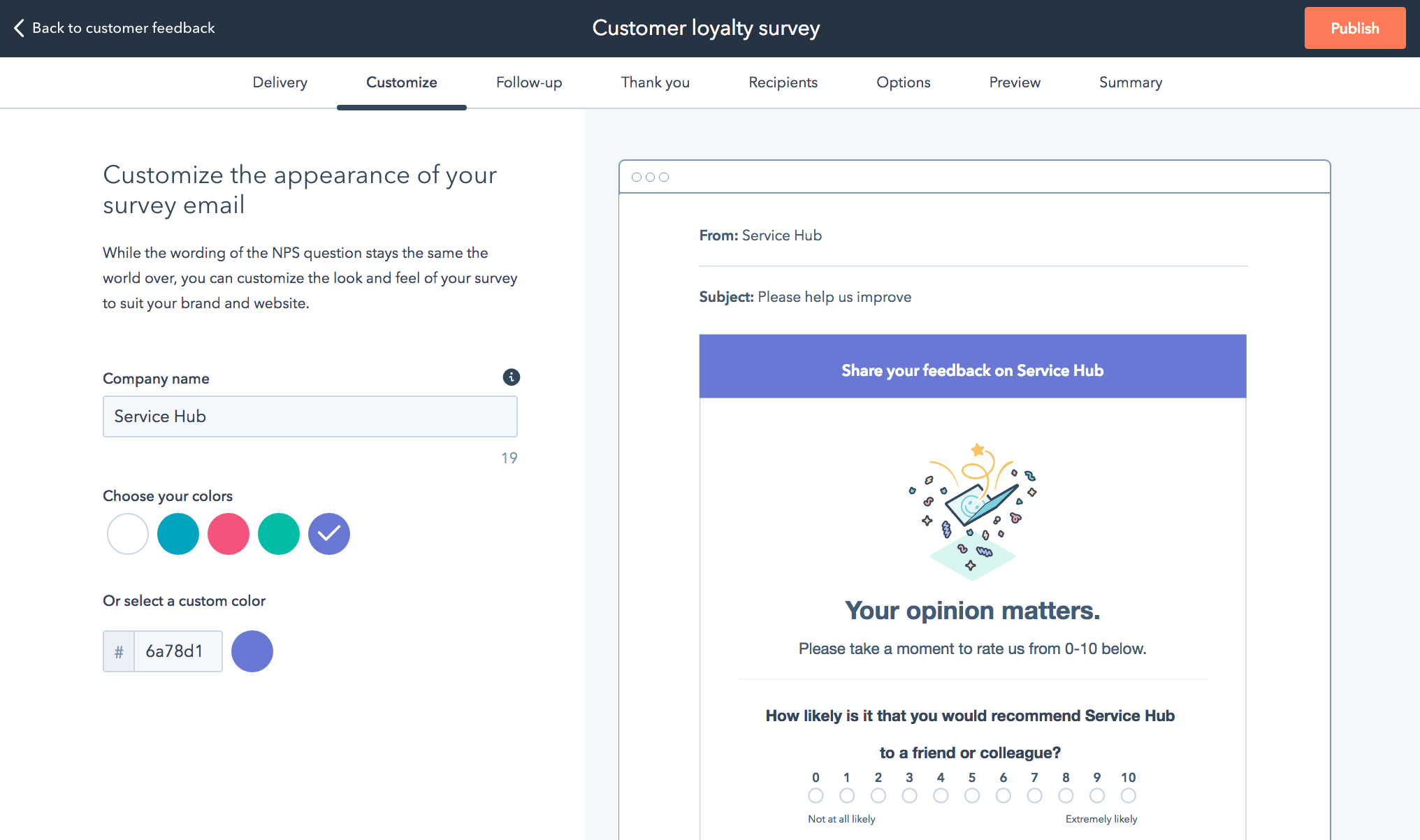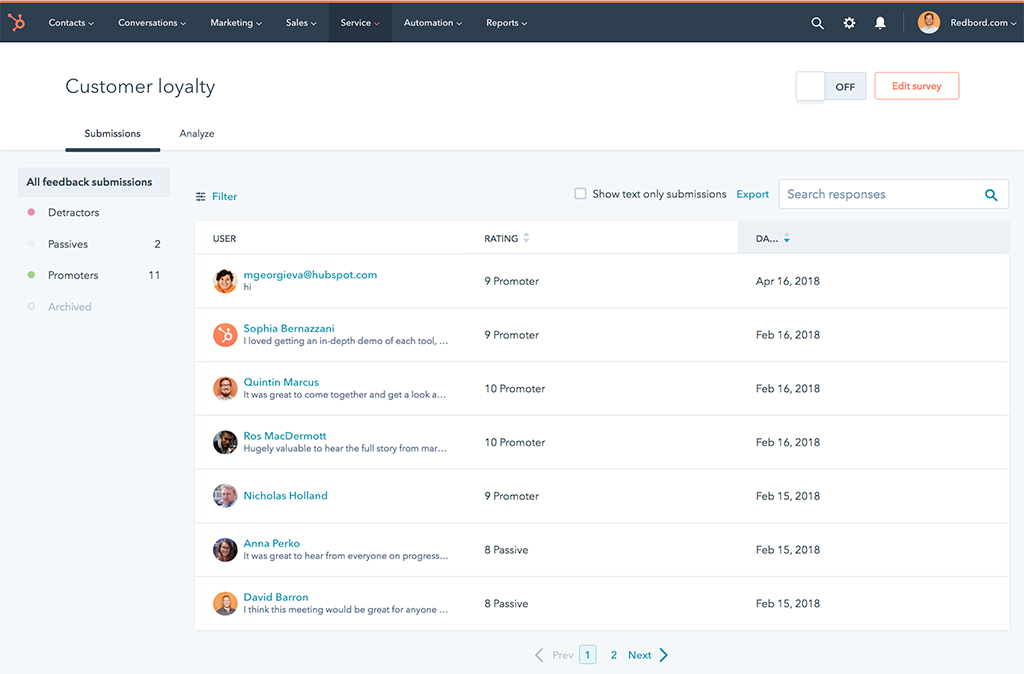Customer satisfaction is the heart of any successful business. When customers are satisfied with your products or services, they are more likely to return, recommend your brand, and become loyal ambassadors. But how can you continuously measure and improve customer satisfaction? This is where the powerful HubSpot CRM tools come into play.
In this article, you will discover the different HubSpot tools that will enable you to systematically measure and subsequently increase customer satisfaction, taking your service strategy to the next level.

How to Measure Customer Satisfaction with HubSpot CRM?
Measuring customer satisfaction involves evaluating their level of happiness and perception of the experience with the company and its products or services. It may sound relatively easy, but the process of obtaining relevant and useful data can present challenges and is not always a simple task to accomplish.
HubSpot CRM tools provide you with a set of functionalities to effectively and accurately measure customer satisfaction, allowing you to gather valuable information about your customers' experience and gain a clear understanding of their satisfaction level.
Here are the most effective tools offered by HubSpot CRM software to perform this precise and valuable measurement:
1. Personalized Satisfaction Surveys
Satisfaction surveys are a direct and effective way to obtain customer feedback after each significant interaction. HubSpot CRM software allows businesses to easily create and send customized surveys through various channels such as email or their website.
These surveys can be personalized for different market segments and include relevant and specific questions to assess different aspects of the customer experience, such as product/service quality, received support, satisfaction with the purchasing process, among others. The collected responses will provide you with valuable quantitative information about customer satisfaction.
According to a survey conducted by HubSpot, 86% of companies using personalized satisfaction surveys in their CRM software have experienced improvements in customer satisfaction compared to 63% of companies that do not use them.

Image 1. Customizing survey emails with HubSpot.
2. Sentiment Analysis
Sentiment analysis focuses on examining different forms of communication with the aim of understanding the intent of a message and improving the understanding of its content. These assessments allow us to interpret information appropriately and generate empathy with the people we communicate with.
Sentiment analysis is an innovative tool that uses natural language processing to evaluate the emotional tone in customer interactions, such as emails or social media comments. HubSpot CRM software offers sentiment analysis capabilities that enable businesses to understand how their customers truly feel, identify emotional patterns and trends, and respond appropriately.
A study by Forrester Research found that 62% of companies using sentiment analysis in their CRM software have achieved significant improvements in customer satisfaction and increased customer retention.
3. Net Promoter Score
What is NPS?
NPS is a widely used metric for measuring customer satisfaction and loyalty. HubSpot allows you to implement NPS surveys and obtain a numerical score that indicates the level of satisfaction and the likelihood of customers recommending your products/services to others. This metric is based on a simple question: "On a scale of 0 to 10, how likely are you to recommend our products/services to a friend?"
With NPS data, you can identify your promoters (satisfied and loyal customers), passives (neutral customers), and detractors (unsatisfied customers), enabling you to focus your efforts on strengthening relationships with promoters and addressing detractors' concerns.
According to a Gartner report, companies using Net Promoter Scores integrated into their CRM software have experienced an average 20% improvement in customer retention and a 15% increase in revenue.

Imagen 2. Net Promoter Score (NPS) in HubSpot.
4. Social Media Monitoring
In the era of social media, listening to what customers are saying on these platforms is essential. HubSpot CRM software offers social media monitoring functionality that allows businesses to track and analyze relevant mentions and conversations about their brand. This helps measure customer satisfaction in real-time and provides the opportunity to quickly respond to comments and resolve issues.
According to a study by Bain & Company, companies that respond to customer complaints on social media experience a 20% increase in customer satisfaction and a significant improvement in customer loyalty.
5. Analysis and Reporting
HubSpot CRM provides powerful analysis and reporting capabilities to assess customer satisfaction more deeply. You can access key metrics such as customer satisfaction rate, average response time, case resolution, and more. These reports allow you to identify patterns, trends, and areas for improvement. Additionally, you can set goals and track your progress over time.
6. Integration with Other Tools
HubSpot CRM integrates with other tools and services, further expanding your possibilities for measuring customer satisfaction. You can use external survey tools like SurveyMonkey or Typeform and link them to your HubSpot CRM to centralize and manage all customer satisfaction data in one place. This integration facilitates analysis and data-driven decision-making.
A Centralized Platform for a Comprehensive View of Customer Satisfaction
In summary, measuring and elevating customer satisfaction is essential for the success of any business. HubSpot CRM tools offer powerful and effective solutions to take this task to the next level. From personalized satisfaction surveys to sentiment analysis, NPS usage, and social media monitoring, these tools provide valuable and actionable insights to continuously improve the customer experience.
Lastly, it is important to mention that using HubSpot CRM software is crucial to leverage these tools to the fullest. It provides a centralized platform that allows you to effectively collect, store, and analyze data, gaining a comprehensive view of customer satisfaction. Furthermore, its integration with other marketing and sales tools facilitates seamless communication and a holistic approach to customer satisfaction.
Contact Us
We’d Love To Hear From You!
If you have any questions or comments about this article or are interested in learning more about our business consulting services, we invite you to contact us. We'll be happy to assist you.
References:
Photo by John Schnobrich on Unsplash